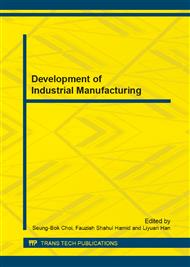p.469
p.473
p.478
p.482
p.491
p.495
p.499
p.504
p.509
Effect of Steel Fiber Volume Fraction and Curing Conditions on the Compressive Behavior of Alkali-Activated Slag Concrete
Abstract:
In this paper, an experimental investigation was carried out to examine the influence of hooked end steel fiber volume fraction and curing conditions on the compressive performance of concrete produced by using ordinary portland cement (OPC) and alkali-activated slag (AAS). Three different volume fractions of 0.5%, 1.0% and 1.5% were used in OPC and AAS concrete mixtures. Cylindrical specimens with 100 x 200mm were tested for compressive behavior of both concretes at 3, 7 and 28 days of curing age. Test results showed that curing conditions had a significant effect on compressive properties in the hardened OPC and AAS concretes. The addition of steel fibers generated a decrease in compressive strength of OPC while an increase in the compressive strength of AAS concrete was shown with adding steel fiber.
Info:
Periodical:
Pages:
491-494
Citation:
Online since:
February 2014
Authors:
Price:
Сopyright:
© 2014 Trans Tech Publications Ltd. All Rights Reserved
Share:
Citation:


